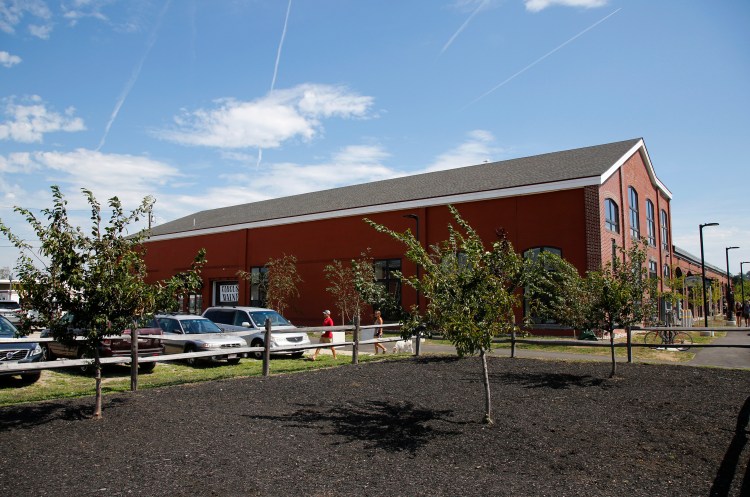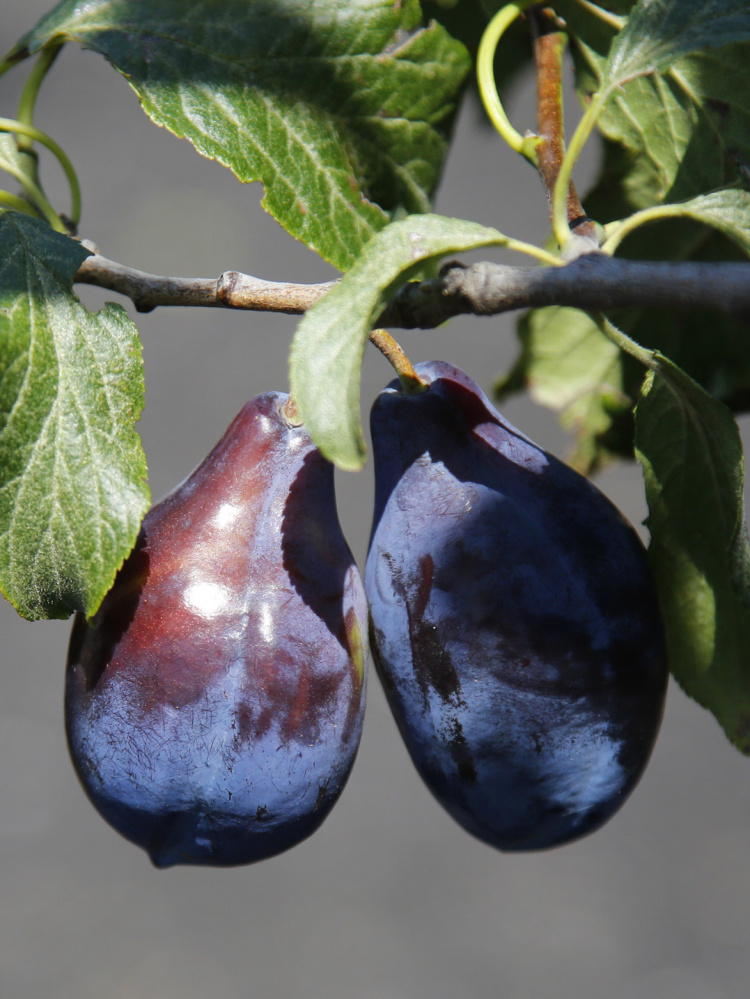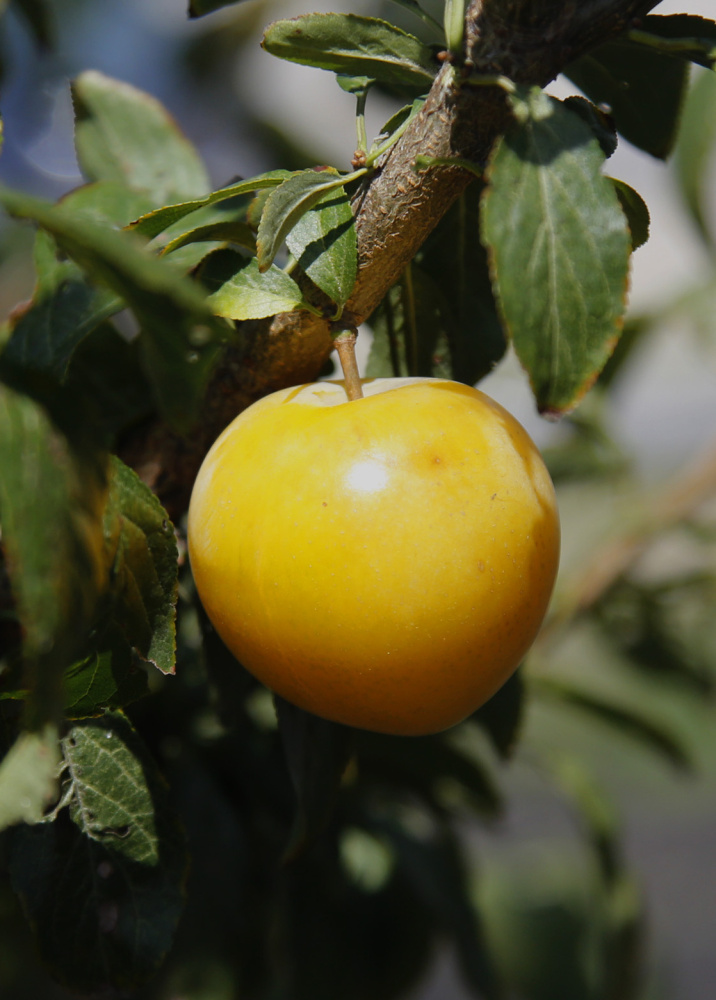The four small trees at Thompson’s Point in Portland are collectively known as the “Tree of 40 Fruit,” though they do not yet have 40 different varieties of fruit growing on them.
In recent weeks big, beautiful plums have drooped from their branches – plums with fanciful names like Ersinger Fruhzwetschge and Prune D’ Ente.
Sam Van Aken, the man behind this arboriculture-as-art project, couldn’t be more pleased.
“I’ve been impressed by how much they’ve grown,” said Van Aken, an associate professor in the School of Art at Syracuse University in New York. “It’s sort of crazy. I didn’t anticipate having them set so much fruit so early.”
Van Aken uses grafting to get 40 different fruits to grow on the same tree. It’s a common horticultural technique, but Van Aken uses it as a sculpting tool to transform a tree into, as he puts it, a piece of art, a research project and a form of conservation at once. As art, the 40 varieties on each tree bloom in a symphony of pink, white and crimson in the spring, then produce a multitude of fruits over the course of the summer. As research, they could provide some insight into pollination. And as a conservation project, they will help preserve native and heirloom varieties of fruit for future generations to enjoy.
Van Aken had already grafted 20 varieties of stone fruits onto the trees before he planted them at Thompson’s Point. Van Aken visits the little orchard twice a year to graft on more fruit, and will continue to do so through the third year of the project, he said, adding cherries next summer. Otherwise, others check on the trees for him, and Thompson occasionally sends Van Aken photographs so he can check for bugs or disease.
The fruiting is as orchestrated as the spring blossoms. Cherries come first in July, followed by apricots. The first of the Asian plums fruit at the end of July and European plums start showing up in August. Peaches arrive with the European plums, but last longer into the season.
Van Aken has planted individual trees around the country, but the Portland project is his first grove. The Thompson’s Point peninsula is slated to get more trees, as soon as the next renovation project – 35,000 square feet of event space – is completed, says developer Chris Thompson, “so as the project grows, the grove grows with it.”
Van Aken and Thompson were surprised when the trees produced “many dozens of pieces of fruit” last summer, Thompson said. Not enough to schedule a public tasting or use in any significant project, but enough for the creative folks at the Open Bench Project – a shared space for artists, makers and other creative types at Thompson’s Point – to bake hand pies. And Thompson did a little sampling himself.
“There’s this phenomenal plum that’s green on the outside and bright red on the inside,” he said. “It’s just absolutely amazing, really delicious. And the yellow plums are incredible. They’re really sweet.”
Van Aken identified the green-and-red plum as a satsuma.
Next year, Van Aken plans to graft more native Maine varietals of fruit onto the trees. He’ll graft a McLaughlin plum, an “excellent fresh eating plum” that originated in Bangor. He’s also working with the U.S. Department of Agriculture to find a “Downeaster peach” that used to grow in South Portland; Van Aken said he expects to find that heirloom fruit through genetic material stored in the USDA archives.
To put together his list of varietals for the Thompson’s Point trees, Van Aken went through all of the Maine Agricultural College annual reports from the 19th century. “With plums,” he said, “there’s thousands that taste very, very differently, and they were bred for different purposes.”
“The Plums of New York,” published in 1911, has been another research guide. “It had all these varieties from Maine,” Van Aken said, “and the interesting part was that in that book it says that the state of Maine could produce enough plums for the entire country, that it had the climate and soil for it.”
Thompson hopes that, once all of the trees are producing lots of fruit, the brewery and distillery at Thompson’s Point can use it. Van Aken wants to hold public tastings, letting everybody taste a bit of history through the heirloom fruit.
Thompson recalls marveling at a 14th-century French plum he bit into: “You’re thinking to yourself, ‘I’m experiencing a taste that is centuries old right now and, but for efforts like this, could easily be lost.'”
Send questions/comments to the editors.






Comments are no longer available on this story